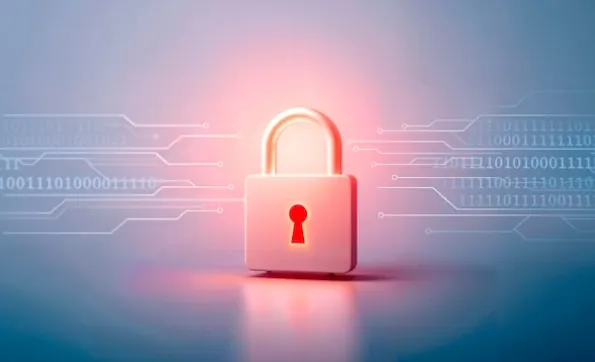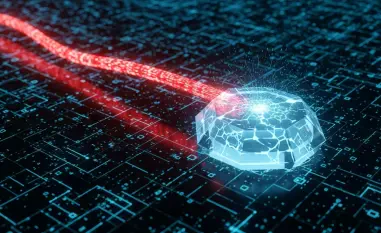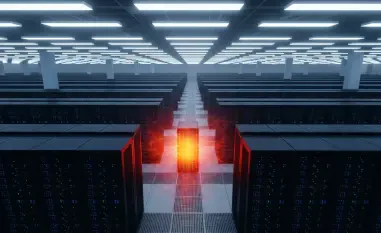Malik Haidar is a cybersecurity expert with extensive experience in combating threats and hackers within multinational corporations. His expertise encompasses analytics, intelligence, and security, with a strong focus on integrating business perspectives into cybersecurity strategies.
What is the AWS Shared Responsibility Model?
The AWS Shared Responsibility Model is essentially a division of labor between AWS and its customers. AWS handles security “of” the cloud, such as infrastructure, hardware, software, and networking. Customers are responsible for security “in” the cloud, meaning they must manage data, configure rights, and control network traffic within their environment.
Can you explain what AWS secures and what the customer is responsible for?
AWS ensures the security of the infrastructure that runs AWS services, like data centers, hardware, and networking. However, customers must secure their applications, data, operating system, and network configurations they run within AWS. This means protecting endpoint devices, configuring firewalls, and ensuring data encryption.
What are some common misconceptions about AWS cloud security?
A common misconception is that AWS itself provides full security, but in reality, AWS’s availability and infrastructure are secured, not the individual customer’s applications and data. Many believe that once they migrate to AWS, they’re fully protected, but neglecting security configurations on their end can lead to vulnerabilities.
How can cloud security scanners like Intruder assist in securing AWS environments?
Cloud security scanners like Intruder help by automating the detection of vulnerabilities within your cloud environment. They continuously monitor for weaknesses, provide alerts, and recommend steps to mitigate risks. This proactive approach helps customers stay ahead of potential threats, ensuring their part of the shared responsibility model is effectively managed.
Could you provide examples of real-world vulnerabilities within AWS setups?
Certainly. An example could be misconfigured S3 buckets that inadvertently expose sensitive data to the public. Another example is overly permissive IAM roles that can give users more access than necessary. Both cases highlight how configuration errors can lead to significant security breaches.
What is the RESURGE malware and what are its capabilities?
RESURGE is a sophisticated malware with a range of capabilities, including rootkit features that allow it to survive reboots and even function as a dropper, backdoor, bootkit, proxy, and tunneler. Its versatility makes it particularly dangerous as it can persist within a system and perform multiple malicious activities.
What specific Ivanti flaw does the RESURGE malware exploit?
RESURGE exploits a stack-based buffer overflow vulnerability in Ivanti Connect Secure, Policy Secure, and Neurons for ZTA Gateways. This flaw, identified as CVE-2025-0282, allows for remote code execution, giving attackers potential broad access and control over the affected devices.
How does RESURGE differ from the SPAWNCHIMERA malware variant?
While RESURGE incorporates capabilities from SPAWNCHIMERA, such as surviving reboots, it further enhances these abilities with distinctive commands that alter its behavior. This makes RESURGE more versatile and adaptable, posing an even greater threat with its expanded functionality.
What versions of Ivanti products are affected by the CVE-2025-0282 vulnerability?
The affected versions include Ivanti Connect Secure before version 22.7R2.5, Ivanti Policy Secure prior to version 22.7R1.2, and Ivanti Neurons for ZTA gateways before version 22.7R2.3. These older versions contain the vulnerabilities that RESURGE targets.
How critical is the stack-based buffer overflow vulnerability in Ivanti Connect Secure?
The stack-based buffer overflow vulnerability is extremely critical as it can lead to remote code execution. This allows attackers to gain control over systems, deploy additional malicious software, and potentially steal data, compromising the overall security of the network.
Why are phishing attacks still prevalent in 2025?
Phishing attacks remain prevalent because they exploit human psychology. Attackers craft increasingly sophisticated emails and messages that appear legitimate, making it easy for even the most cautious individuals to fall for these scams. As long as human error exists, phishing will continue to be a popular attack vector.
How do phishing schemes manage to bypass various security controls?
Phishing schemes bypass security controls through techniques like social engineering, which tricks recipients into believing the messages are authentic. Attackers also use sophisticated methods to avoid detection, such as creating spoofed emails that pass through filters or employing polymorphic tactics to change the appearance of their phishing messages.
What makes Microsoft Office files particularly effective for phishing attacks?
Microsoft Office files are effective for phishing because they are commonly exchanged in business environments and generally trusted. Attackers embed malicious macros or scripts inside these documents. When an unsuspecting user opens the file and enables macros, the malware is executed, which can then compromise the user’s system.
Can you describe common phishing tactics used with Word and Excel documents?
Common tactics include embedding malicious macros in Word and Excel documents. When opened and macros are enabled, the macros execute code that downloads and installs malware. Other tactics involve embedding links within the documents that lead to malicious websites designed to steal credentials or deploy malware.
What preventive measures can organizations take to combat phishing?
Organizations should implement comprehensive security awareness training, teaching employees how to recognize phishing attempts. They should also use advanced email filtering solutions, enable multi-factor authentication, and implement strict policies on the use of macros. Regular phishing simulations can also keep employees vigilant.
What are CSRF tokens and why are they considered a best practice?
CSRF tokens are unique, unpredictable values generated by the server and embedded in web forms. They provide an additional layer of security by ensuring that requests are coming from authenticated sessions and not from malicious third-party sites. This helps to prevent unauthorized actions on behalf of the user.
Are CSRF tokens sufficient to prevent CSRF attacks? Why or why not?
CSRF tokens are effective but not infallible. While they help prevent cross-site request forgery attacks, their implementation needs to be robust. If tokens are not managed properly, such as being predictable or not rotated regularly, attackers may still find ways to exploit these vulnerabilities.
What significant threats do CSRF vulnerabilities pose?
CSRF vulnerabilities pose significant threats by allowing attackers to perform unauthorized actions on behalf of authenticated users without their knowledge. This can range from changing account settings, making transactions, or deleting data, leading to severe consequences for both users and organizations.
Can you describe the types of vulnerabilities found in solar power systems from Sungrow, Growatt, and SMA?
Researchers discovered 46 critical flaws, including the ability to execute arbitrary commands on devices, take over user accounts, and gain unauthorized access to vendor infrastructures. These vulnerabilities can be exploited remotely to disrupt power grids or steal sensitive data from the associated cloud services.
What could be the potential risks of exploiting these vulnerabilities?
Exploiting these vulnerabilities could result in attackers taking control of solar power systems, manipulating grid functionality, causing extensive power outages, and potentially leading to data breaches. Additionally, attackers could misuse the systems for malicious activities like launching further cyberattacks or causing physical damage to the grid infrastructure.
How can attackers manipulate these solar power system devices or infrastructures?
Attackers can exploit vulnerabilities to gain administrative access, upload malicious software, or alter system configurations. This could allow them to control power output, shut down systems, or misuse the devices to launch additional attacks, destabilizing the power supply and causing significant operational disruptions.
What measures can be taken to secure solar power systems against these vulnerabilities?
Ensuring regular updates and patches for all devices is crucial. Employing rigorous network monitoring, segmentation, and anomaly detection can also help. Additionally, adopting strict access controls, regular security assessments, and incorporating redundancy and failover systems can protect against potential attacks.
What are the top Microsoft Office-based exploits used by hackers in 2025?
In 2025, the top Office-based exploits include phishing schemes using malicious macros, zero-click exploits that require no user interaction, and the exploitation of legacy vulnerabilities in Office software. These exploits remain popular due to their effectiveness and the widespread use of Office applications in businesses.
How do phishing schemes using MS Office files typically work?
Phishing schemes usually involve sending an email with a seemingly legitimate Office file attached. The file often contains macros or scripts that, once enabled, execute malicious code. This can lead to further malware downloads, data exfiltration, or other unauthorized activities on the victim’s system.
What is a zero-click exploit in the context of MS Office documents?
A zero-click exploit involves vulnerabilities that can be triggered without any interaction from the user. In the case of MS Office documents, simply opening a document could exploit a flaw in the software, allowing malicious code to run and compromise the system without the user having to enable macros or take any additional steps.
Why do business environments remain vulnerable to Office-based attacks?
Businesses remain vulnerable because Microsoft Office is widely used and trusted in professional settings. Attackers prey on this trust and the necessity of document sharing. Additionally, not all organizations promptly apply patches or train employees sufficiently on recognizing malicious documents, leaving gaps for exploits.
What is the NetApp SnapCenter application used for?
NetApp SnapCenter is an enterprise software solution used to manage data protection for applications, databases, virtual machines, and file systems. It provides backup, restoration, and cloning capabilities to safeguard and maintain data integrity across various platforms.
Can you explain the nature of the CVE-2025-26512 vulnerability?
The CVE-2025-26512 vulnerability in SnapCenter allows authenticated users to escalate their privileges to admin status on a remote system. This flaw poses significant risks as it can enable unauthorized access, allowing users to perform administrative actions that could compromise the security of the entire system.
What versions of SnapCenter are affected by this flaw?
The affected versions include SnapCenter prior to 6.0.1P1 and 6.1P1. These versions are susceptible to the privilege escalation vulnerability, which has been addressed in the latest patches provided by NetApp.
Do you have any advice for our readers?
It’s essential to stay vigilant and proactive in cybersecurity. Regularly update and patch systems, implement comprehensive security training programs for employees, and use advanced security tools to monitor and protect your environment. Remember, cybersecurity is a continuous process, not a one-time effort.













